Filipino Bibingka Rice Cake with Coconut & Banana Leaves
As an Amazon Associate and member of other affiliate programs, I earn from qualifying purchases.
Is it possible to long for Christmas memories like a Filipino Bibingka Rice Cake in July?
The aroma of the burnt banana leaves flew around our backyard. It was the smell of a burning sweet leaf mixed with the aromas of butter and coconut that hit me. The soft breeze escalated the food fragrances and brought back poignant memories of Christmas when I was growing up.
How is it possible to miss Christmas when it is only July, and the day has a torridly hot 101 degree temperature?
A bibingka can do that to me (say “bee-bing-ka”). This is a rice cake that has grounded sweet rice, eggs, butter, coconut, flour, two kinds of cheeses and wrapped in a bundle of banana leaves. Traditionally it is cooked in an outdoor clay pot with fire kindled from both under and over it. It is also a very traditional holiday cake in the Philippines and typically cooked in December when the tropical weather gets cooler. It is a time honored rice cake and recipes have been passed on for generations.
One of the pioneers of Philippine cuisine and food writing, the late Doreen Gamboa Fernandez described this delectable rice cake well : “Baking, as of bibingka, was done by putting heat on top (as well as below) — glowing coals on the clay pot or skillet lid.”
IACP award winning cookbook author, Amy Besa, owner of the Filipino restaurant “Purple Yam” in NYC, another noted authority on Philippine food described the bibingka’s method of cooking as “a type of baking that requires very high heat at the top with low heat at the bottom, which gives bibingkas their characteristic caramelized tops.”
I remember seeing the authentic, original way bibingka was baked, from when I was growing up in the Philippines and Amy Besa described it well in her cookbook Memories of Philippine Kitchens when she said this : ” Since most people in the rural areas in the Philippines do not have ovens, many local bibingka makers form a makeshift oven. The bibingka is baked in a pan lined with banana leaf over a low fire, covered with a metal sheet with a burning coconut husk, wood, pili shells (a type of nut), or hot coals heaped on top. This method defines the concept of bibingka.”
Even if my family and I have lived in the America for over twenty years, I have not forgotten my roots and have kept our heritage alive by continuously cooking Filipino recipes for our daily meals, most especially Sunday suppers.
I had been cooking outdoors this summer using banana leaves on different dishes. I’ve wrapped fish, meat, vegetables and rice cake desserts with banana leaves and grilled them. I love the sweet scent of a burnt banana leaf. I love to touch the crisp, blackened edges of the leaves as it gets off the grill. I love to unwrap what I just cooked with the banana leaves. I love to watch the steam of the cooked food burst out when I open the leaf. Best of all, I love the moist, tender flavors preserved within the ingredients which a banana leaf so superbly does.
So this hot July month, during one of our family cookouts, I decided to recreate a bibingka, even if it was not Christmas yet. I just had to sniff the scent right this minute. Even my family agreed. When we sat down to our regular family Sunday Supper, we had this bibingka right there along with the rest of our entrees.
As it came straight off the grill, and I unwrapped the banana leaves, the familiar fragrance gripped me, like a hug from an old friend I’ve missed. The site of that slab of melting butter in the middle, caressed by the grated coconut tendrils, just drew everyone around the supper table. The rich butter and cheeses melted on the rich sweet rice cake and in the process warmed our hearts.
Like the banana leaf that held the cake together, the bibingka rice cake reminded us of the many Sunday suppers we’ve celebrated that has been our family’s core always.
Filipino Bibingka Rice Cake with Coconut in Banana Leaves
Ingredients
- 1 3/4 cups malagkit (sweet rice) soak in water overnight ( sweet rice from Asian markets) sweet rice or sticky rice, Filipino
- 1 1/2 cups rice galapong obtained from soaking sweet rice, see procedure below
- 1 1/4 cups all purpose flour
- 1 Tablespoon baking powder
- 1/2 teaspoon salt
- 4 , whole large eggs yolks and whites separated
- 3/4 cup coconut milk canned or fresh
- 1/4 cup whole milk
- 1 whole salted egg peeled, quartered
- 1/2 cup grated Gouda cheese
- 1/2 cup crumbled Feta cheese
- 2 Tablespoons melted unsalted butter for brushing top of bibingka cakes
- 2 large whole pieces banana leaves cut to fit and line 9-inch round pans
- 2 Tablespoons softened unsalted butter
- 2 teaspoons granulated sugar
Instructions
- To make the galapong: Rinse the rice under cold running water, drain and place in a medium bowl with cold water to cover. Refrigerate overnight.The next day: Drain and rinse rice again. Drain in a colander. Transfer to a food processor and process until the mixture is finely grounded about 1 minute. Then work again to press the galapong through the sieve. You should have about 1 and 1/2 cups galapong. Discard any extra.
- To make the bibingka: Preheat the oven to 425 F degrees and prepare two 9-inch pie pans lined with parchment paper or banana leaves.
- In a large bowl, combine the flour, 1/4 cup sugar, baking powder and salt in a bowl. Add the galapong and mix well so that no more lumps remain. Stir in egg yolks, coconut milk, and regular milk.
- In the clean bowl of an electric mixer fitted with a whisk attachment, beat the egg whites till stiff. Fold the whites into the galapong mixture.
- Grease the banana leaves lining the pans with softened butter. Divide the mixture between the lined pans. Nestle each salted egg quarter into the middle of each cake. Sprinkle each cake with 2 tablespoons of the Gouda, and 2 tablespoons of the feta, and lastly the sugar.
- Set the cakes on the top rack of the oven and bake until firm and set, for about 20 minutes. It should be lightly browned on top. If the bibingkas are firm but not browned, preheat the broiler and broil them 6 inches from the heat source, watching it carefully till it is bubbly and light brown, in 3 minutes.
- Brush the bibingka with the melted butter while still warm. Let cool slightly and serve straight from the banana-leaf lined pans.
- Cook's Comments: To get the outdoor burnt banana leaves aroma, I put the entire rice cake, covered in banana leaves on the outdoor grill. The heat should be set to a medium high and the rice cakes are left for 10 minutes. Soon the fragrance of the banana leaves mixed with the coconut will fill the air.
- Hello, Friends! All the images and content on this blog are COPYRIGHT PROTECTED and owned by my media company Besa-Quirino LLC. This means BY LAW you are NOT allowed to copy, scrape, lift, frame, plagiarize or use my photos and recipe content I wrote, on your website,books, films, television shows or videos without my permission. If you want to republish this recipe or content on another website, video, news article,or media outlets mentioned above please ASK my permission, re-write it in your own words and simply link back to this blog to give proper attribution. It’s the legal thing to do. Thank you. Email me at [email protected]
- Disclosure: As a participant in the Amazon Affiliate program, some blog posts contain links to products used in the recipe and sold on Amazon. The price stays the same for the readers who wish to purchase these products on my links. I earn a small commission from Amazon which helps maintain the blog expenses. Thanks in advance for your support.
Nutrition
Nutrition Notes: The nutrition information provided is an estimate and will vary based on cooking or baking methods and brands of ingredients used.
Did you love this recipe? I have more Philippine dessert recipes in my popular cookbook How to Cook Philippine Desserts, Cakes and Snacks.
If you need Filipino Instant Pot recipes, find more in my newest cookbook Instant Filipino Recipes: My Mother’s Traditional Philippine Cooking in A Multicooker Pot. Buy my cookbooks and books on Amazon.com sold worldwide in paperback and Kindle format.
Copyright Notice: Hello, Friends! Please DO NOT LIFT OR PLAGIARIZE my original recipe, stories, photos or videos. All the images and content on this blog are COPYRIGHT PROTECTED and owned by my media company Besa-Quirino LLC. This means BY LAW you are NOT allowed to copy, scrape, lift, frame, plagiarize or use my photos, essays, stories and recipe content on your websites, books, films, television shows, videos, without my permission. If you wish to republish this recipe or content on media outlets mentioned above, please ASK MY PERMISSION, or re-write it in your own words and link back to my blog AsianInAmericaMag.com to give proper attribution. It is the legal thing to do. Thank you. Email me at [email protected].

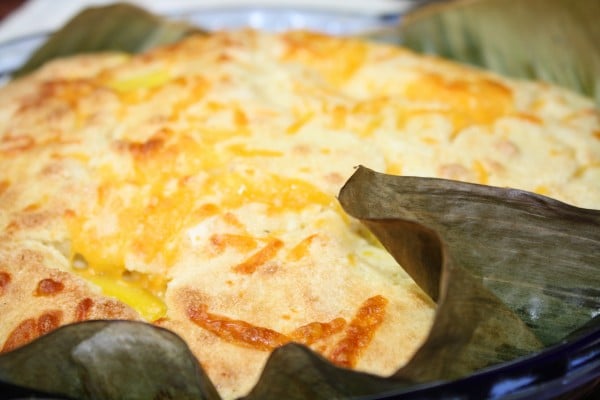
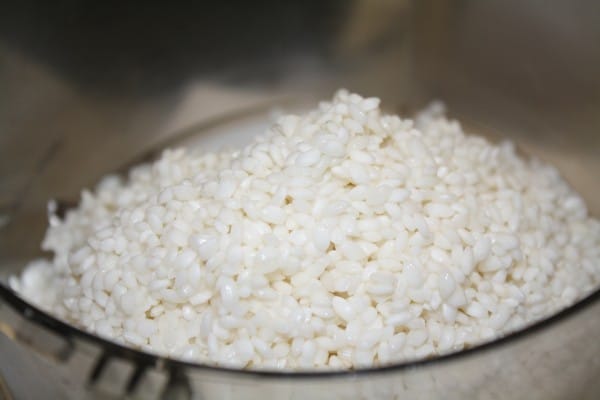
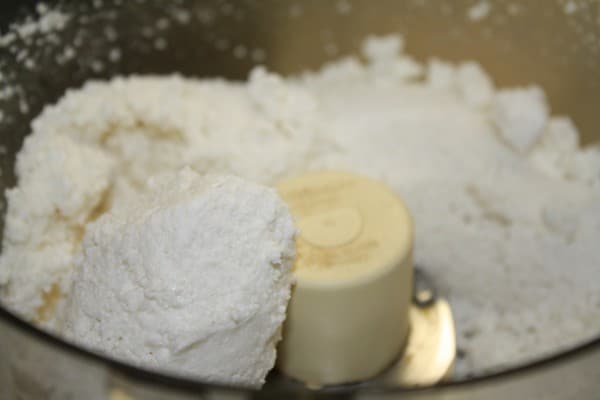
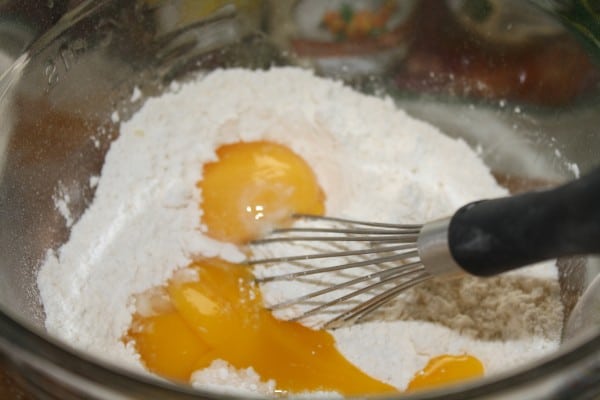
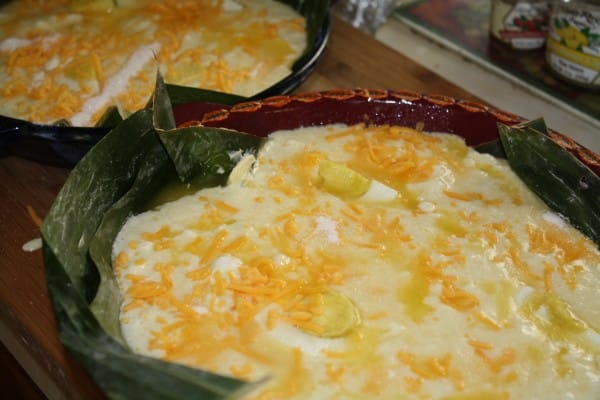
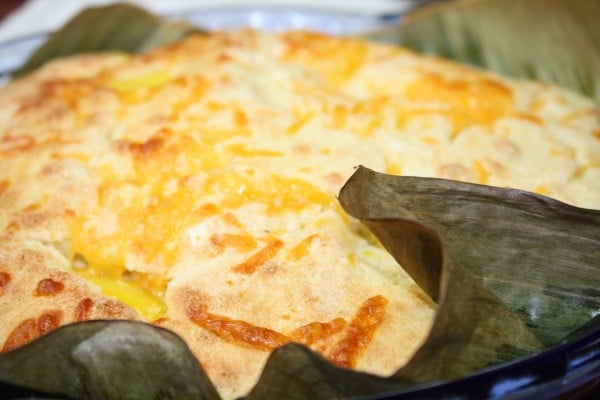
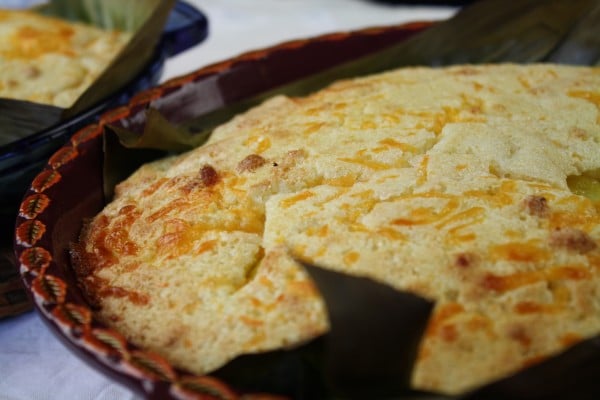
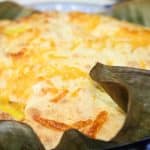
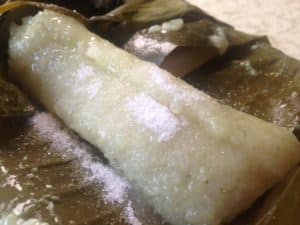
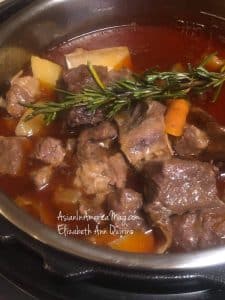
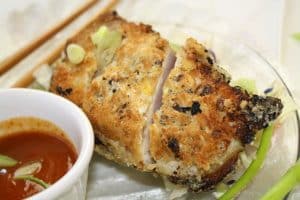
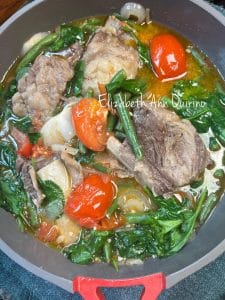

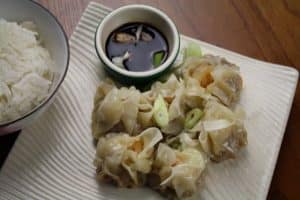
Wow! Cooking this way looks so cool! Thanks for sharing!
Thanks, Cindy! This is a very traditional family recipe we treasure.
I haven’t ever seen this dish before! I would LOVE to try these!
Hi Jen. Cooking with banana leaves is fantastic. You’ll enjoy the flavors. Thanks for stopping by.
#SundaySupper to me is enjoying the company of family and friends, winding down the week with lots of food and drink. I love to cook large meals. Looks so scrumptious. Cindy Brickley at [email protected] See ya at 7:00
Thanks, Cindy, for the kind comments. We share the same sentiments for Sundays!
Oh this looks delicious!!I also love recipes made using banana leaves and the lovely flavor it imparts!!
Thanks, Soni. Glad you enjoy using banana leaves in cooking, too!
Yummy! I have to try this one.
Thanks for dropping by, Kathia!
oops forgot to add @writelane is my twitter handle for #SundaySupper tweetchat!
What fabulous memories that come with this yummy dish! I love that both the scents and taste evoke such a positive response. I’m not sure I can even imagine the taste of these rice cakes…but I’d certainly love a sample! Great #SundaySupper post 🙂
Thanks, Liz. Your kind comments are very encouraging. Yes, this recipe is special and close to my heart and this is why we have it often for Sundays!
I’m so intrigued by this dish…I just love the sound of it! I have a fondness for the smell of banana leaves since I use them for one of my favorite Mexican dishes, as well. Lovely! For me, #SundaySupper means embracing old family traditions while creating new ones. @girlichef
Hi Heather ! Yes, it is a very intriguing dish. It’s easy but you need time and patience. For the family, it’s worth the time it took to make. Thanks for the kind comments.
This looks wonderful!
For me Sunday Supper means being together with my family…it’s usually a larger meal, but it doesn’t have to be.
twitter name: @HomeCookMemory
Thanks, Brandie. So nice of you to stop by.
Love the banana leaves! They make for a really nice presentation.
For us, #SundaySupper is a time to sit – block everything else out – and share our day as a family.
Jamie @ http://www.mamamommymom.com
@mamamommymom
Thanks, Jamie. The banana leaves gave the rice cakes a wonderful flavor. You should try it sometime.
Since Christmas in the Philippines starts in September and doesn’t end until well past January, we can enjoy bibingka for a good chunk of the year. Why not make it all year ’round? This is a marvelous way to make it old school-style! Congrats on the Merrell win – what a great prize and a fabulous giveaway here! 😎
Thanks, Tracey ! How kind of you to say such nice things. Yes, its definitely old school style. Amy’s coaching and Romy’s demonstrating the recipe to me has helped me make this over and over again expertly. This is why we have it all year round.
I love dishes that bring back family memories, especially ones having to do with something so special as Christmas!
Thanks, Audrey! I love the flavors and fragrance of this rice cake — it never fails to bring back family memories!
What a beautiful dish! Thank you so much for sharing your food memories–and not only memories, but the “how to’s” and history–with us all. You are the best!
Thanks, Jenni! You are such a kind and precious friend. I appreciate all the love, encouragement and support you genuinely and generously give! Cheers and hugs 🙂
Very nice reicpe! Lov the flavors, and the photos!
Thanks, Catalina! Nice of you to stop by. Yes, this is a well-loved family recipe!
I love recipes like this, they are unique and fun to make! I love the idea of enjoying the burnt banana leaves:-) Hugs,Terra
Thanks, Terra! This is such a favorite. When my kids see me soak the rice the night before Sun. morning, they get excited & know some good rice cakes are coming up. Try it. It’s easier than it sounds 🙂
After reading this recipe and the accompanying story I was reminded of the Christmases back in the Philippines when I was a child and I have fond memories of eating this treat around the holidays. I would love to make this here in Canada but if I cannot find the banana leaves what can I use to line the pan with instead. I know I won’t get that wonderful aroma and essence from the leaves, sadly to say.
Hi Liza! Thanks for the nice comments. If you can’t find frozen banana leaves from Asian groceries (freezer section), you can line the round pans with parchment paper. This recipe is amazing and you will love it. I sometimes make the galapong ahead, early in the day if I am trying to divide my time. But the results are delicious. Let me know how it turns out. Happy Holidays!
Hi Elizabeth,
I will definitely give this a try now that I know I can use parchment paper. Thanks for the replying to my query.
Merry Christmas to you and your family as well.
LOL, just read over my reply.. I meant to say thanks for replying to my query.. but I was typing too fast… it came out wrong..
Thanks, Liza! Enjoy your holidays and let me know how your bibingka turns out.
We enjoyed reading your Bibingka Recipe and it is very detailed in nature. You put a lot of time into this and we can really tell that it would be very awesome to make at home for all your friends and family! Thanks so much for sharing.
Thanks, Larry. Enjoy the bibingka with your family!